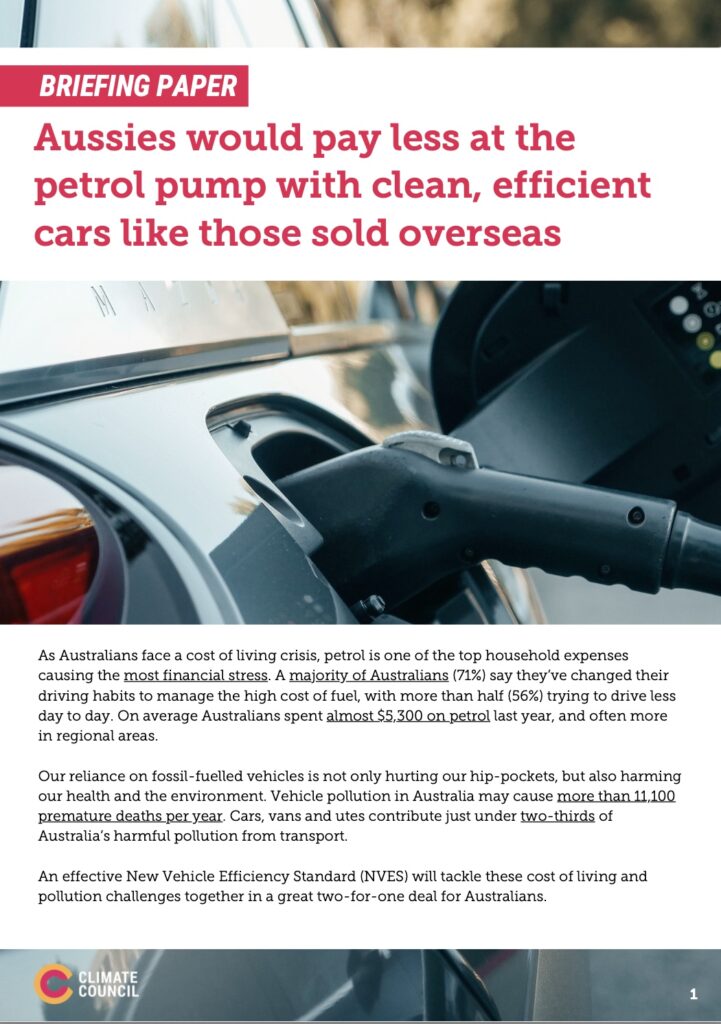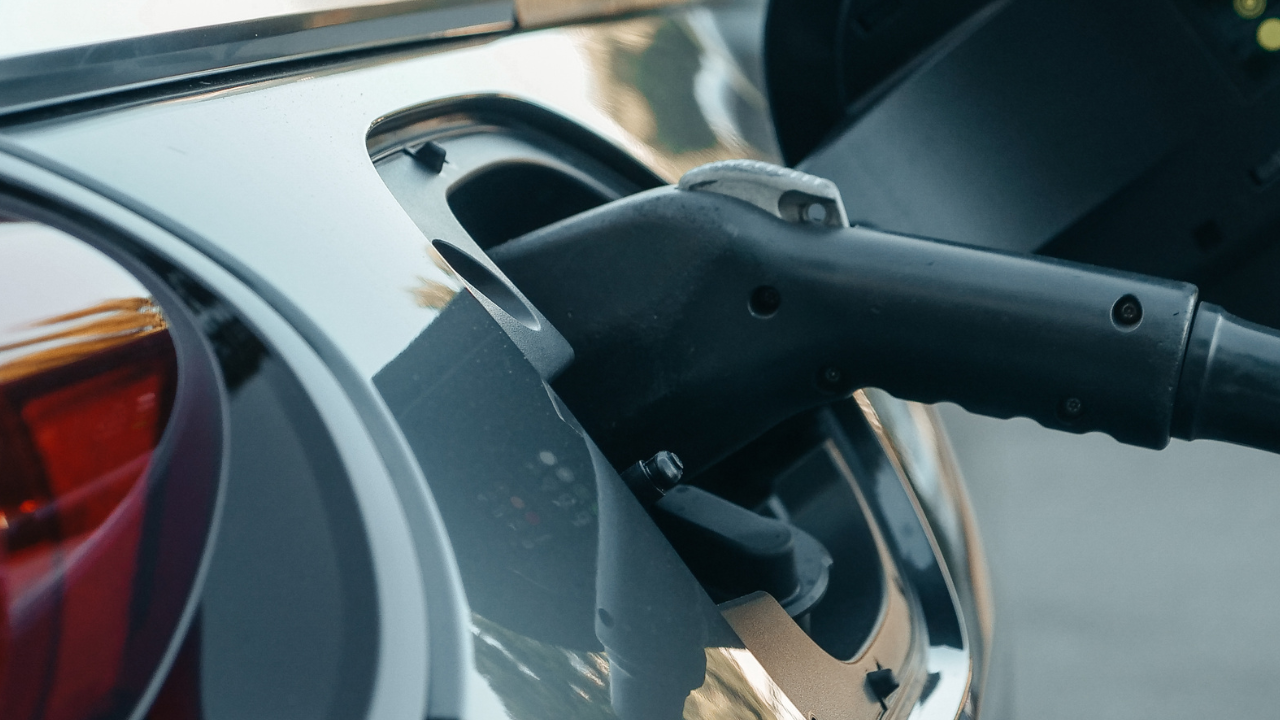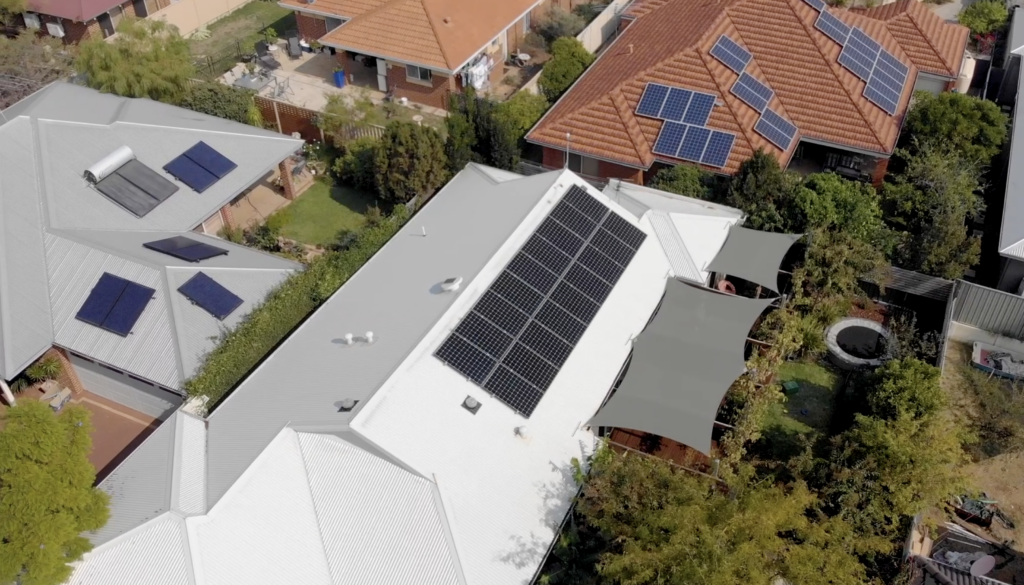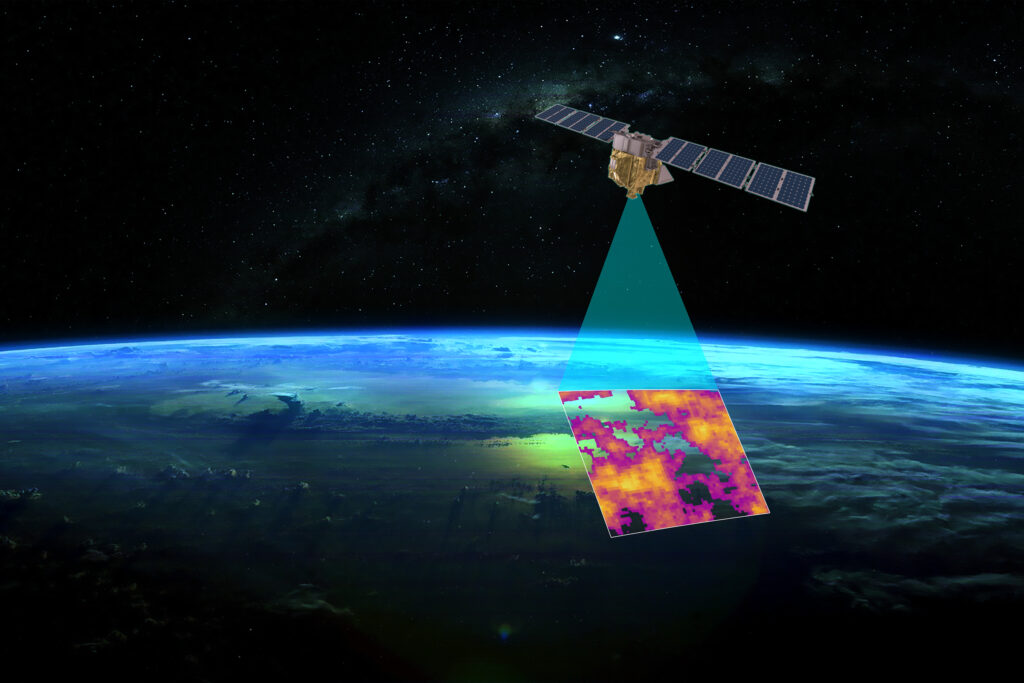As Australians face a cost of living crisis, petrol is one of the top household expenses causing the most financial stress. Our reliance on fossil-fuelled vehicles is not only hurting our hip-pockets, but also harming our health and the environment.
An effective New Vehicle Efficiency Standard (NVES) will help tackle these cost of living and pollution challenges together in a great two-for-one deal for Australians.
Countries like the United States, Europe, China and the United Kingdom have had fuel efficiency standards in place for decades. Today, the success of these standards can be seen in their cleaner, cheaper to run new cars. Climate Council’s analysis shows improvements in the efficiency of new vehicles leads directly to shrinking fuel bills. Aussies could be saving up to $720 on a new car or $1,250 on a new ute or van, with standards seen overseas.
It’s time for the Federal Government to put the pedal to the metal and deliver this standard, so Australians can start seeing the same benefits already enjoyed by drivers overseas.
Background: What is the New Vehicle Efficiency Standard?
The New Vehicle Efficiency Standard aims to limit the pollution Australia’s cars release
by setting a limit on the average annual emissions across a manufacturer’s new car sales. Over time, the maximum amount of pollution allowed is reduced, which means car makers must offer Australians a wider range and more choice of new low and zero emissions vehicles. Fuel efficiency standards like this already cover over 85% of the world’s car markets.

Methodology
Fuel efficiency data for 2024 has been obtained from the International Council of Clean Transport’s (ICCT) data tables and converted from g CO2/km to L/100km via ICCT’s calculator. Data for China’s LCVs and targets are sourced from ICCT (2023). Where no explicit value is listed for 2024, a linear reduction has been assumed (i.e. If China’s passenger vehicles’ emissions were 117 g CO2/km in 2020 and they have a target for 93 g CO2/km in 2025, in 2024 it is estimated to be 98 g CO2/km). Australia’s most recent fuel efficiency data is from 2022 (DITRDCA 2024). Petrol bills are calculated as if all countries paid similar prices and had similar driving habits to Australians. Petrol is priced at AU$1.90 a litre, the average national retail price for petrol in 2023. Driving distances use the average for passenger vehicles (11,100km) and light commercial vehicles (15,300km). ICCT’s calculator was also used for case studies to convert mpg on the WLTP to L/100km on the NEDC cycle.










